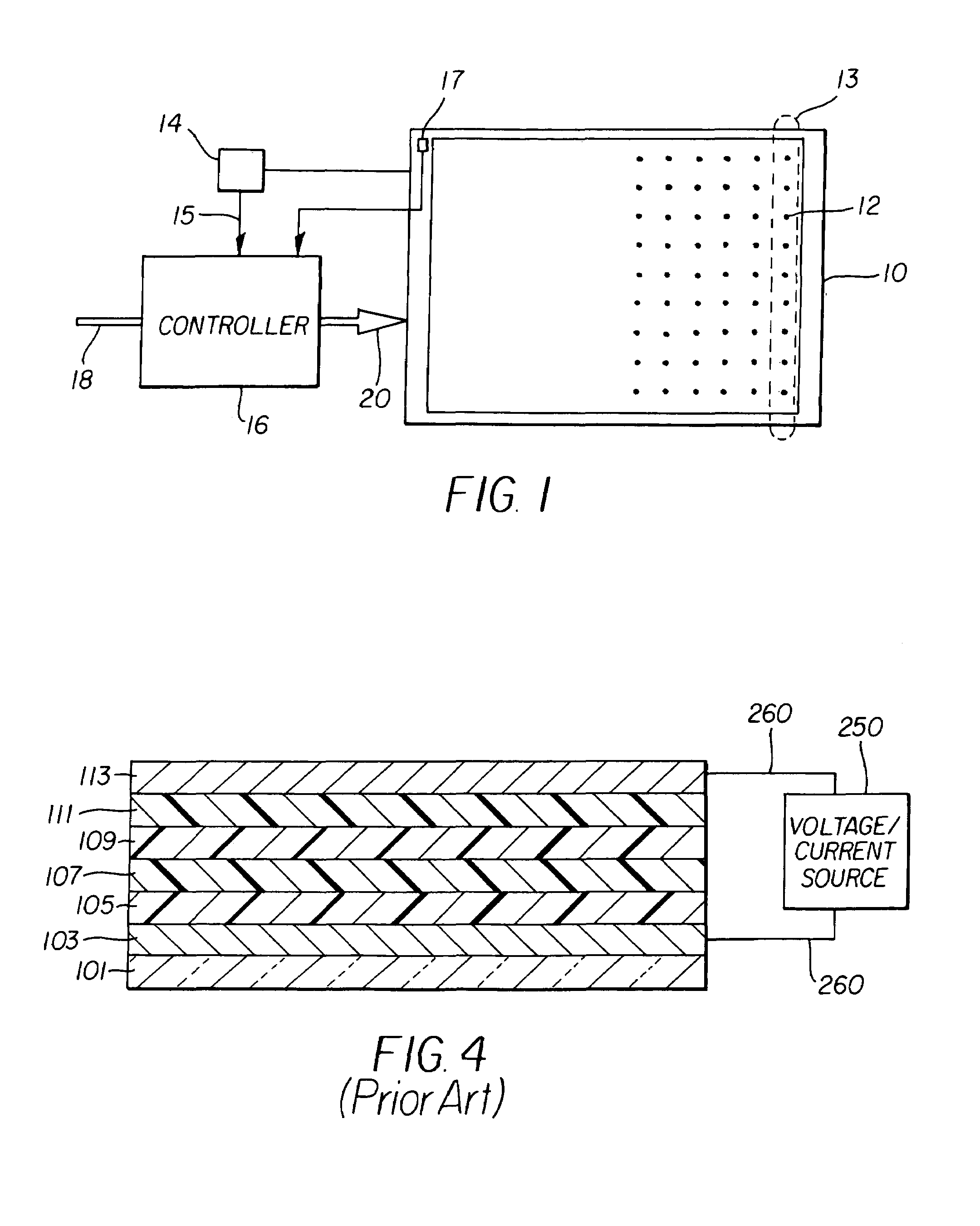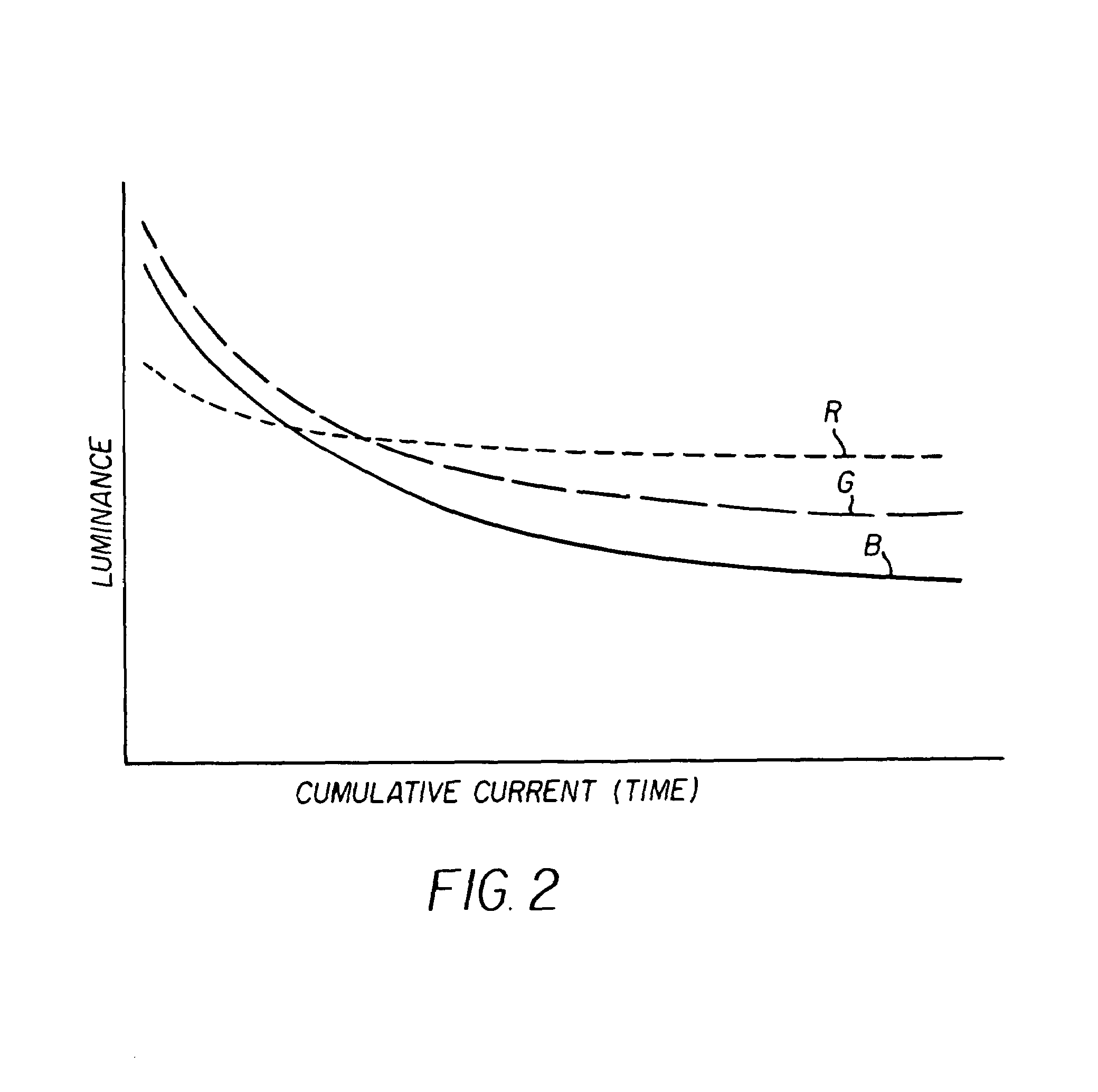OLED display with aging compensation
a technology of aging compensation and oled display, which is applied in the direction of static indicating devices, instruments, electroluminescent light sources, etc., can solve the problems of reducing the lifetime of the display, differential color aging and a display, and the organic materials of the device aging and becoming less efficient at emitting ligh
- Summary
- Abstract
- Description
- Claims
- Application Information
AI Technical Summary
Benefits of technology
Problems solved by technology
Method used
Image
Examples
Embodiment Construction
[0017]Referring to FIG. 1, one embodiment of the present invention includes an OLED display 10 having a plurality of light emitting elements 12 that are arranged in groups 13; a current measuring device 14 for sensing the total current used by the display to produce a current signal on line 15; and a controller 16 for driving the display. According to the present invention, the controller 16 includes means for simultaneously activating all of the light emitting elements in a group and responds to the current signal for calculating a correction signal for the light emitting elements in the group. The controller 16 applies the correction signal to input image signals 18 to produce corrected input image signals 20 that compensate for the changes in the output of the light emitting elements of the group. The current measuring device can comprise, for example, a resistor connected across the terminals of an operational amplifier as is known in the art.
[0018]In one embodiment, the display...
PUM
 Login to View More
Login to View More Abstract
Description
Claims
Application Information
 Login to View More
Login to View More - R&D
- Intellectual Property
- Life Sciences
- Materials
- Tech Scout
- Unparalleled Data Quality
- Higher Quality Content
- 60% Fewer Hallucinations
Browse by: Latest US Patents, China's latest patents, Technical Efficacy Thesaurus, Application Domain, Technology Topic, Popular Technical Reports.
© 2025 PatSnap. All rights reserved.Legal|Privacy policy|Modern Slavery Act Transparency Statement|Sitemap|About US| Contact US: help@patsnap.com



